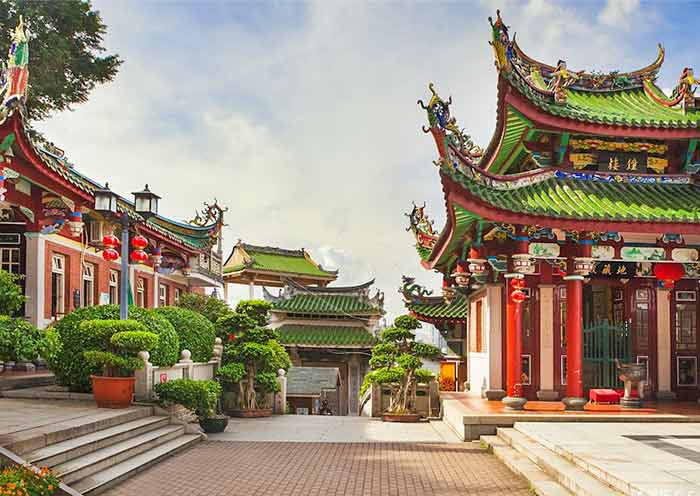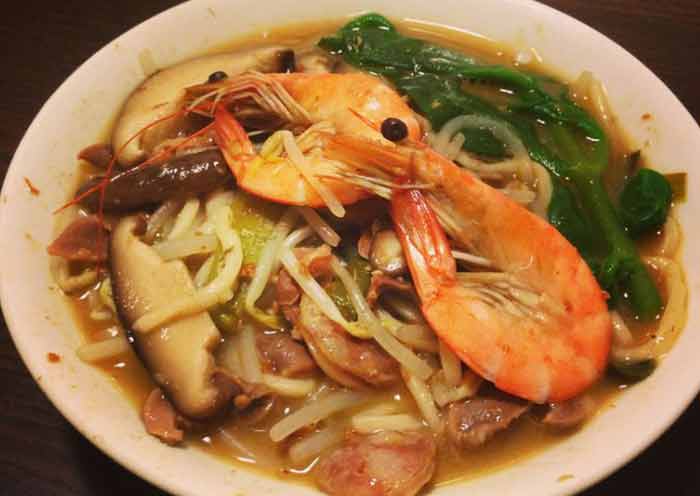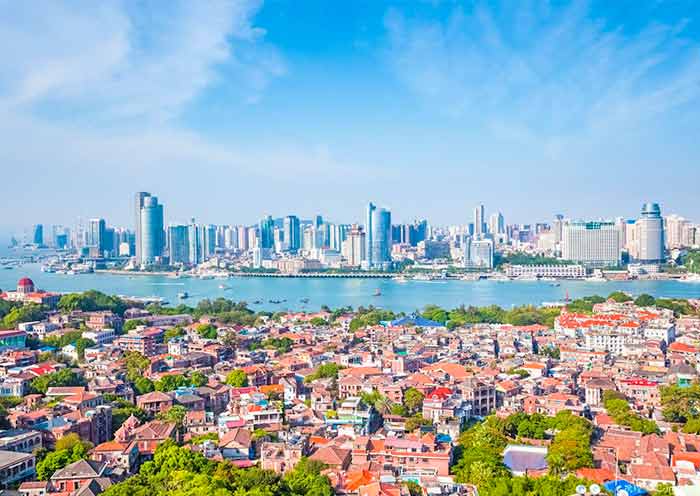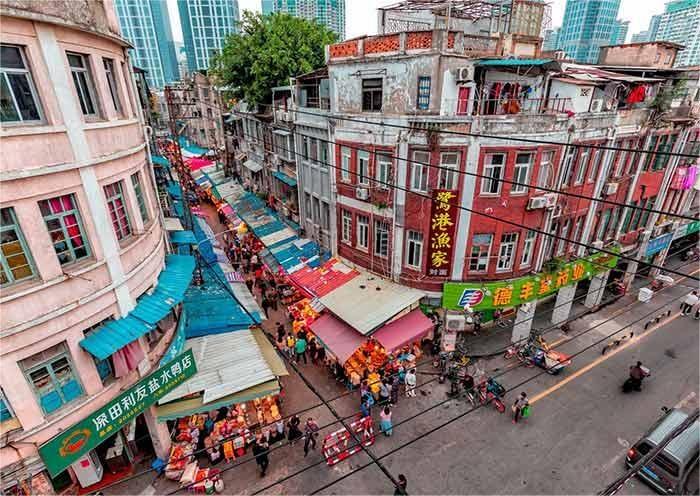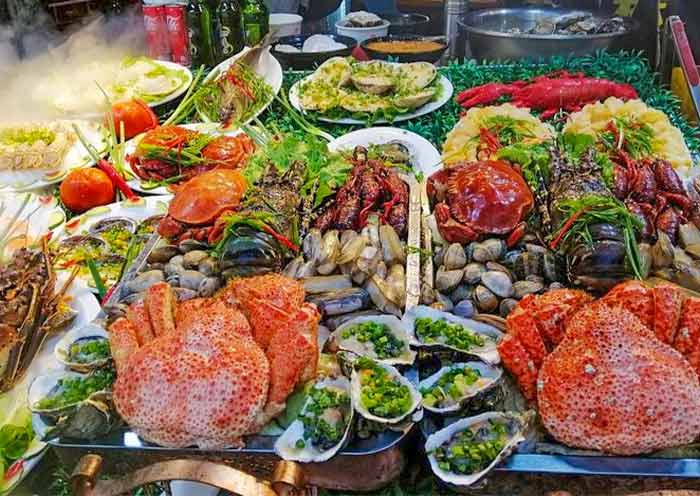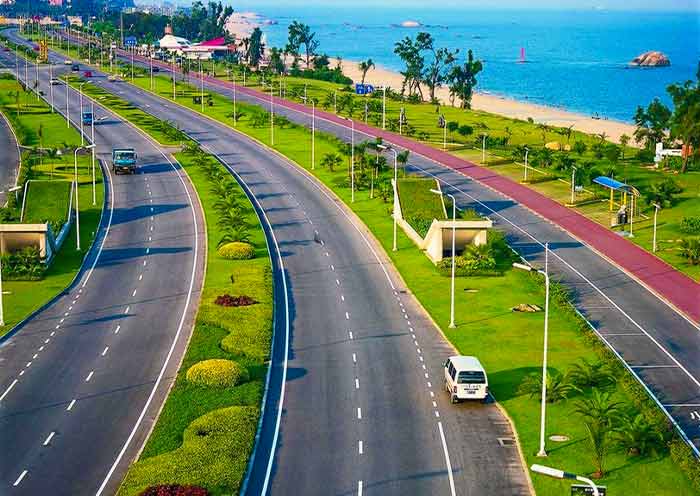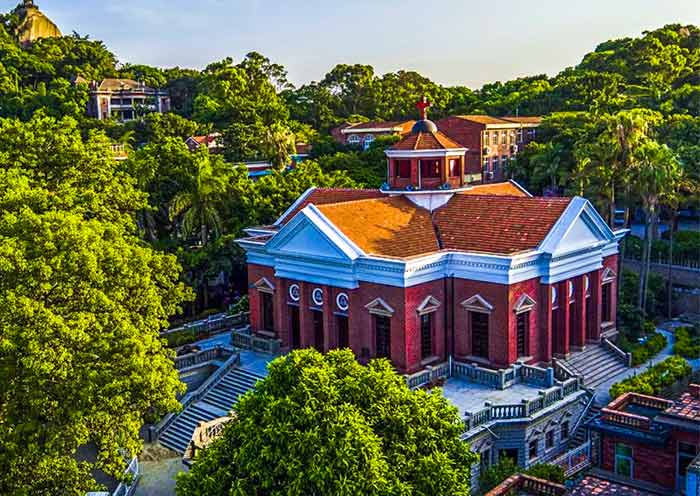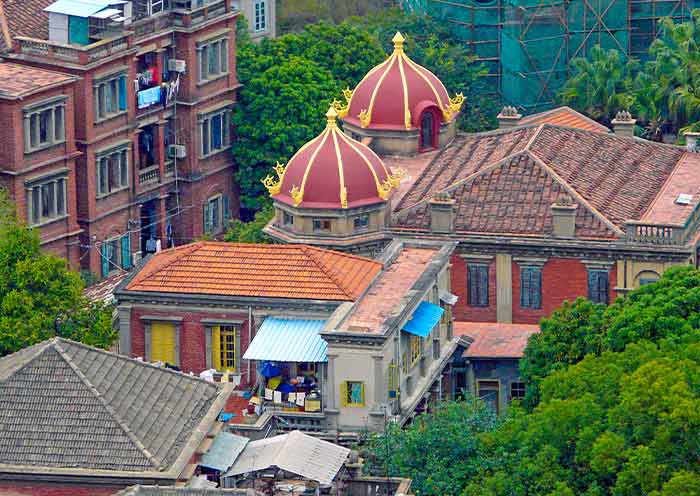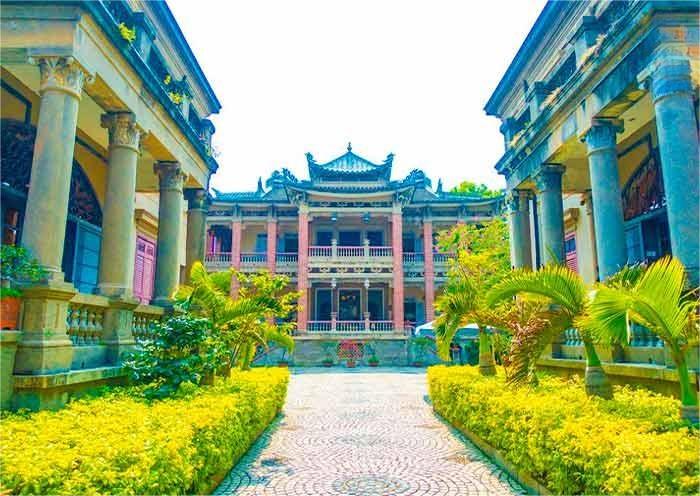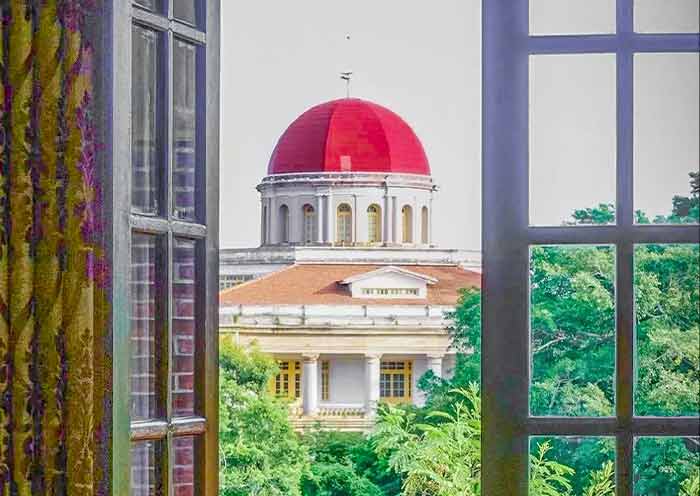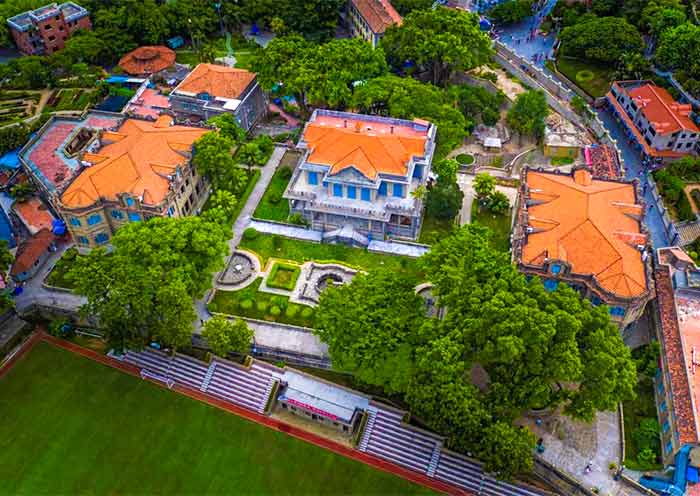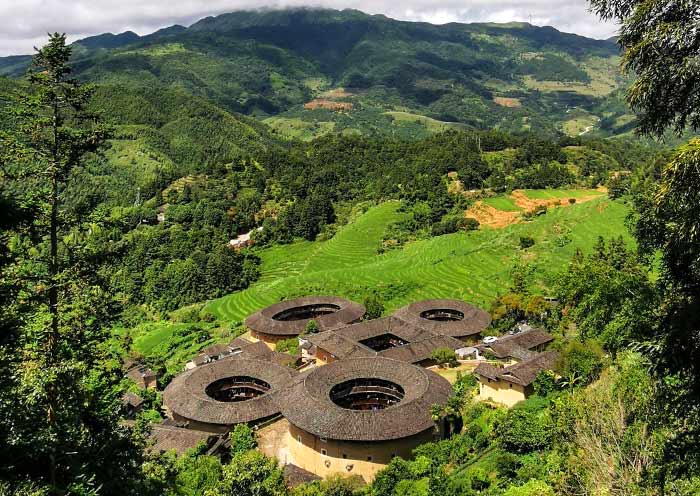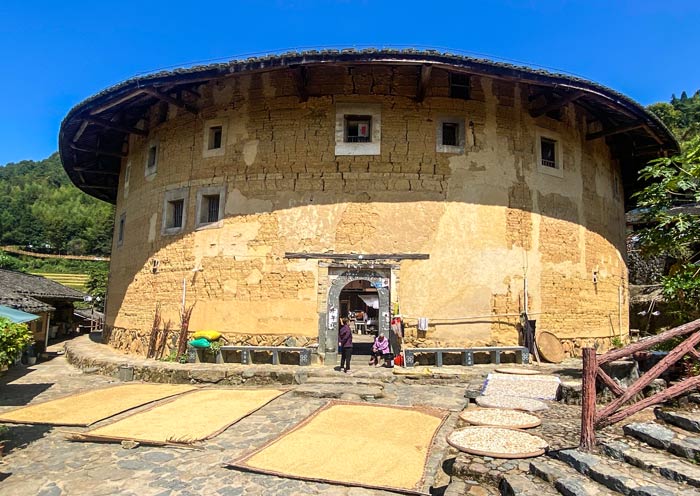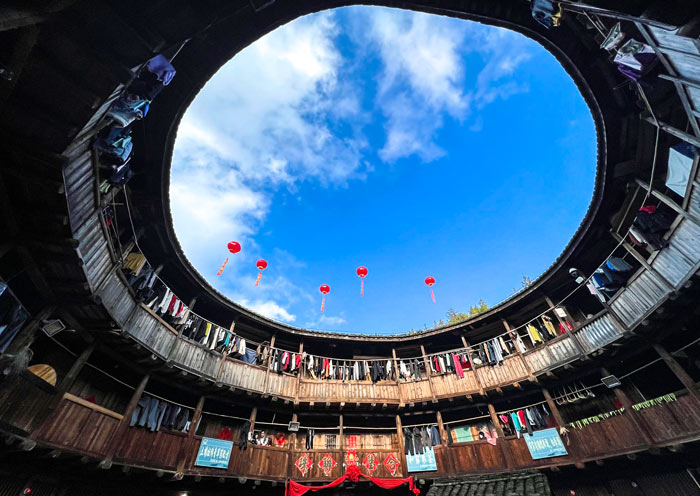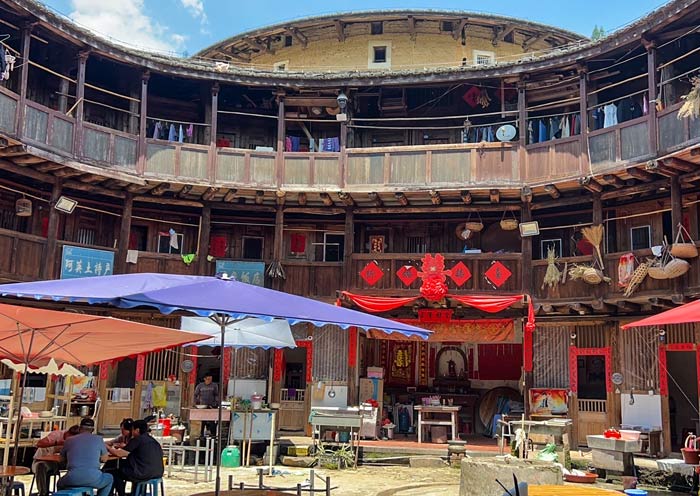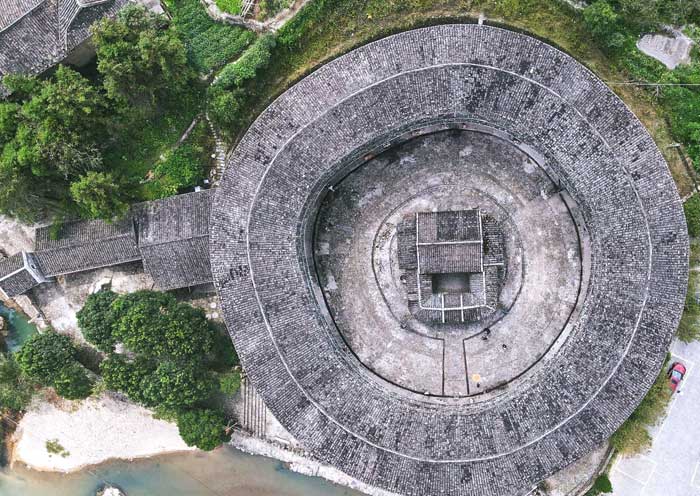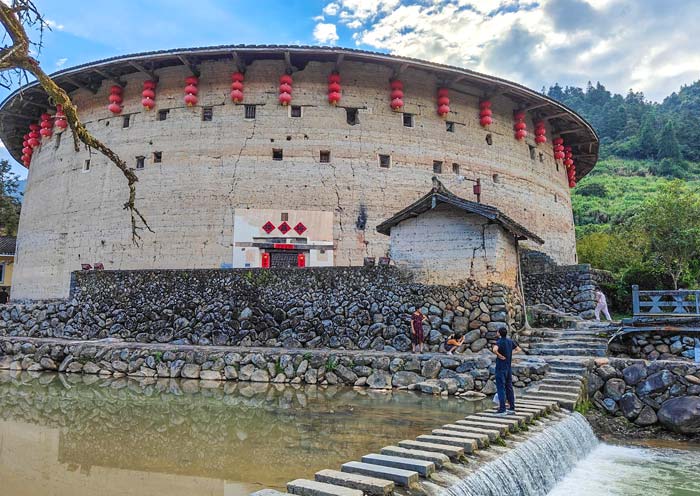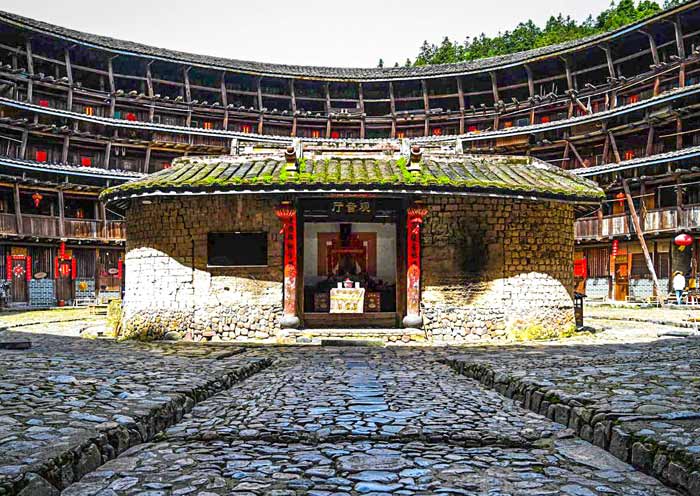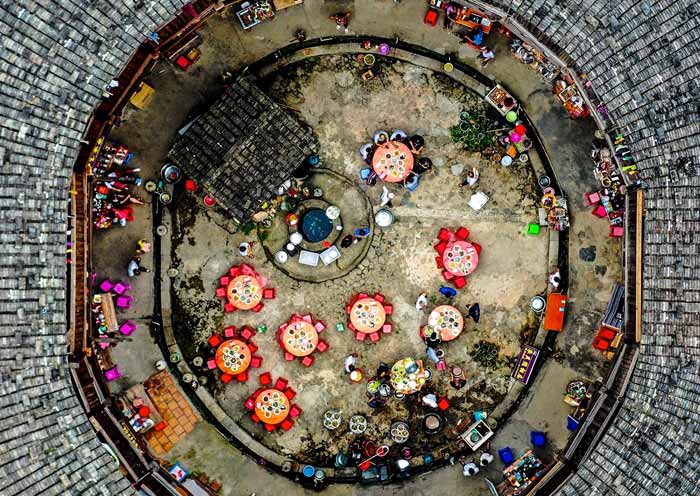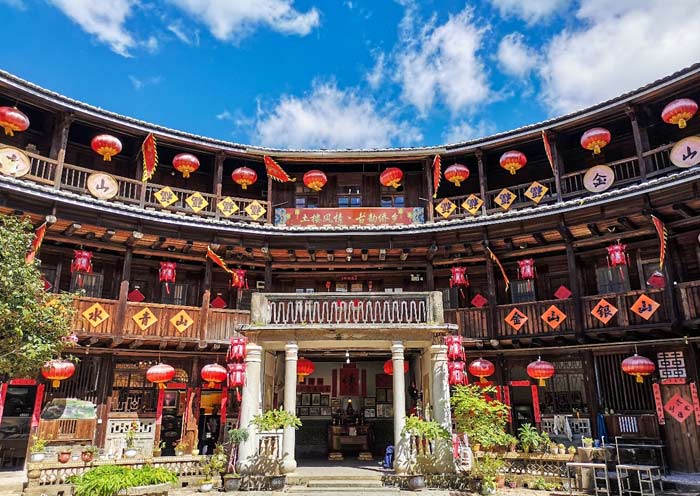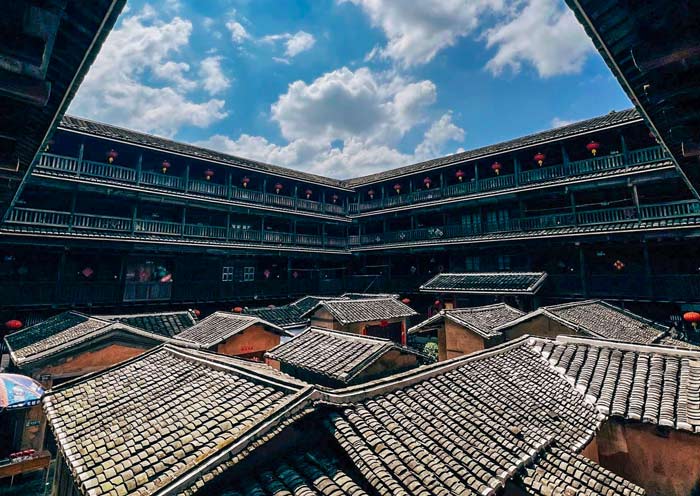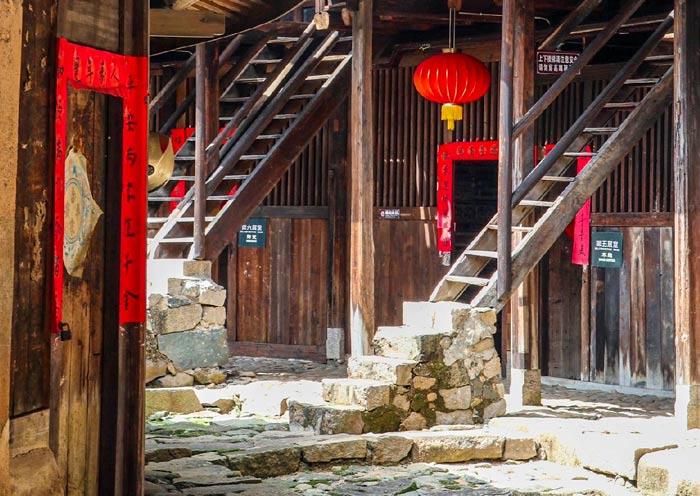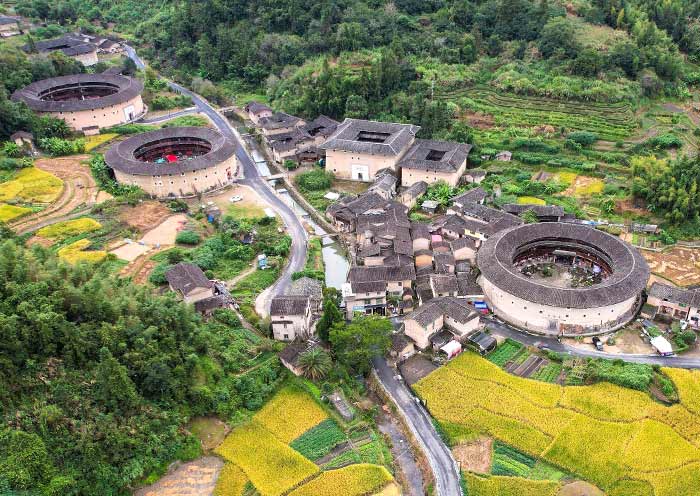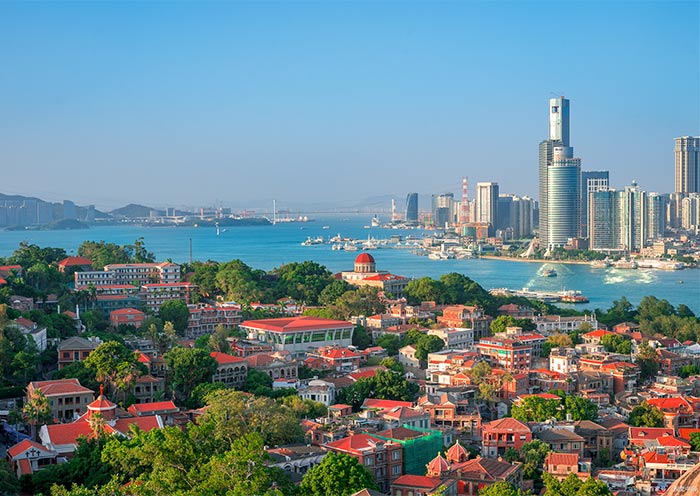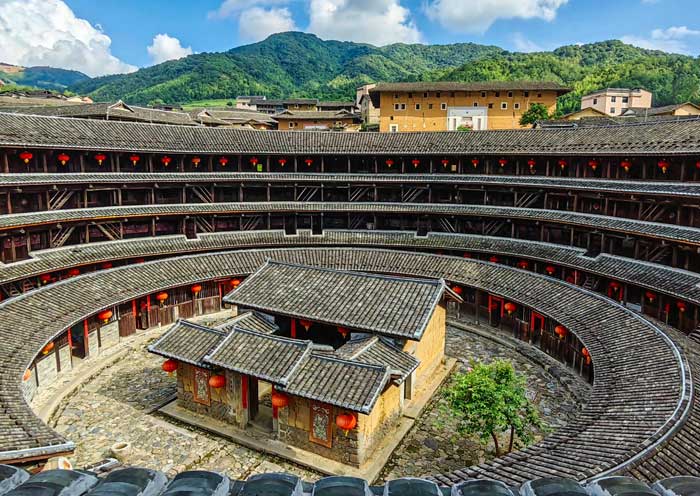Highly recommended for families seeking history and nature. The desert experience at Shapotou was unforgettable, and seeing the massive Western Xia Tombs gave us a real history lesson. The highlight was tasting the excellent wine at Xige Winery—a pleasant surprise in China's west! The tour was well-organized, and the guide and driver were exceptional, ensuring a smooth and enjoyable journey.
- Highlights
- Itinerary
- Price
- Trip Notes
- Accommodation
- Photos
- Reviews
Attention all heritage enthusiasts and cultural connoisseurs!
There are two World Heritage sites awaiting you in our 4-Day Xiamen Gulangyu and Fujian Tulou In-depth Tour.
Gulangyu Island, inscribed on the UNESCO World Heritage List in 2017, has a unique historical role as an international settlement. The island hosts a rich array of well-preserved buildings with over 200 historical structures featuring different architectural styles. Follow our meticulously curated route, and you will be immersed in a visual feast of architectural styles. Gothic architecture with its soaring spires and pointed arches will transport you to medieval Europe, while symmetrical Chinese designs will bring you closer to the traditional aesthetics of the East. Romanesque architecture with its semi-circular arches evokes the grandeur of historical empires, and fusion-style villas narrate tales of cultural integration and exchange.
Fujian Tulou was inscribed by UNESCO World Heritage in 2008, a testament to a resilient community spirit and architectural genius. The Tulou are exceptional examples of a building tradition and function exemplifying a particular type of communal living and defensive organization in harmony with their environment. We have selected the best tulou clusters in both Nanjing and Yongding, which are the essence of the Fujian Tulou. Explore the "four dishes and a soup" layout of the Tianluokeng Tulou Cluster. Step inside the Yuchang Building, marveling at its slanting structure. Wander through Taxia Village, "Zhouzhuang Water Town in southern Fujian". Reveal an authentic side of Tulou life in Chuxi Tulou Cluster. Visit the Chengqi Building, the "King of Tulou" in the Gaobei Tulou Cluster.
Join us for the 4-Day Xiamen and Fujian Tulou In-depth Tour, where heritage comes alive and every moment is a living history lesson. Secure your passage to the past, and be ready to witness the spectacular dialogue between mankind and its monumental achievements.
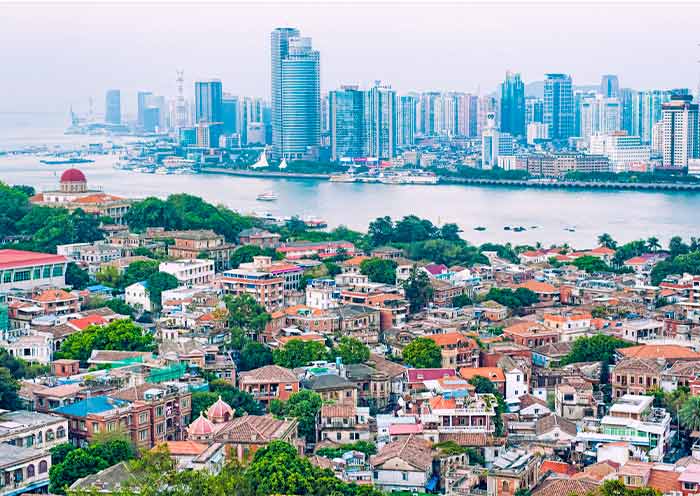
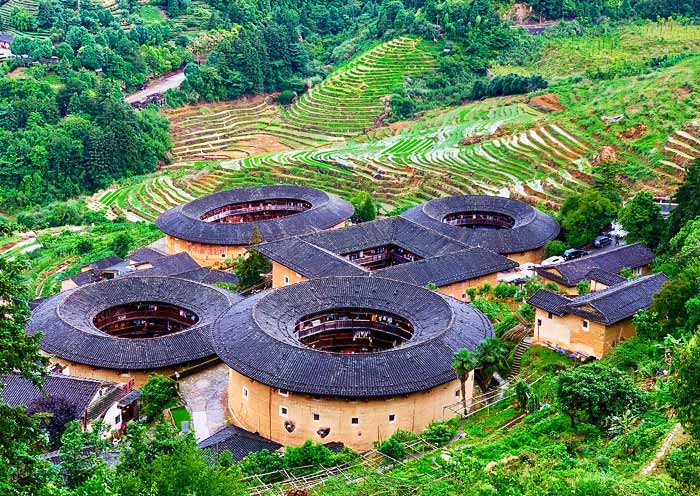
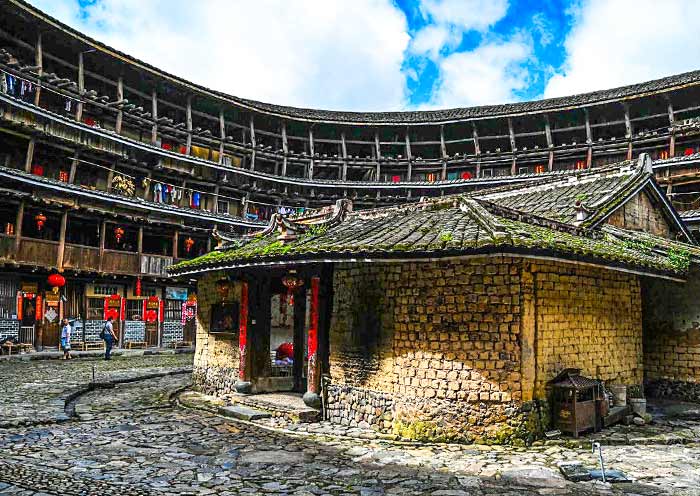
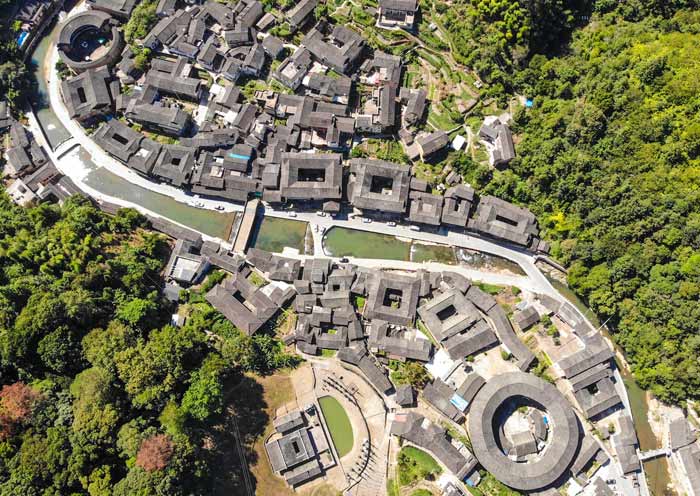
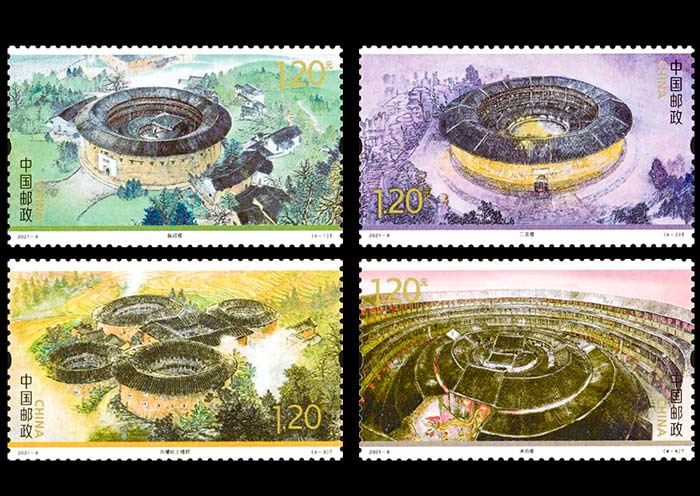
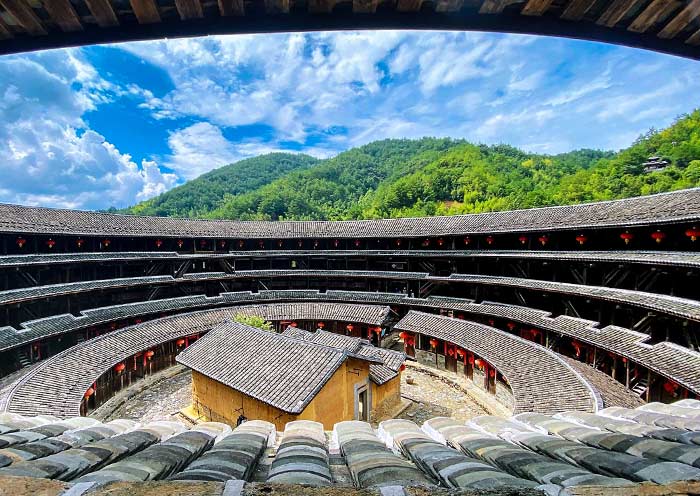
Itinerary at a Glance
Xiamen (2 Days)
Gulangyu Island, South Putuo Temple, Zhongshan Road, Eighth Seafood Market, Huandao Road
Nanjing Tulou (1 Day)
Tianluokeng Tulou Cluster, Yuchang Building, Taxia Village
Yongding Tulou (1 Day)
Gaobei Tulou Cluster, Chengqi Building, Chuxi Tulou Cluster, Jiqing Building
Itinerary Day by Day
Nihao! Welcome to Xiamen, the beautiful seaside city of Fujian Province. Xiamen boasts lush parks, sandy beaches, and picturesque islands, most notably Gulangyu, which is a UNESCO World Cultural Heritage site. Upon your arrival at the airport/train station in Xiamen, the tour guide and driver will meet and greet you at the exit, and then escort you to the well-selected hotel in downtown Xiamen for check-in.
After a short rest, you can enjoy the feeling of old Xiamen by strolling on Zhongshan Pedestrian Street. Zhongshan Road is the only walking street in China that leads directly to the sea and is also one of the earliest developed commercial areas in Xiamen. Today, the 1.1-kilometer-long Zhongshan Road remains the busiest commercial street in Xiamen. A major highlight of Zhongshan Road is the array of historic Qilou buildings (or arcade-houses) lining the street, constructed by returning overseas Chinese in the 1920s. These Qilou buildings featuring a South-East Asian style, are adorned with delicate Western-style carvings, Chinese engravings are seamlessly integrated with Greek column heads, showcasing a harmonious blend of Eastern and Western architectural elements. While shopping and savoring delicious food, you can also appreciate the unique artistic and historical value of these buildings, experiencing the profound cultural heritage of Xiamen.
Alternatively, you can turn into the small alleys near Zhongshan Road to explore the local life of Xiamen. These alleyways are filled with the ancient charm of the Southern Fujian, offering a plethora of colorful Minnan snacks and authentic old-brand restaurants. I recommend trying the Shacha Noodles (沙茶面) and Oyster Omelette (蚵仔煎). Seafood is also a major highlight of Xiamen's cuisine. You can visit the nearby Eighth Market, which is the most famous seafood market in the locality. There, you can explore a wide variety of fresh seafood and perhaps even try some local seafood dishes. (Tips: If you decide to dine at the Eighth Seafood Market, be sure to negotiate the price before you purchase any seafood to avoid any misunderstandings.)
Lastly, indulge in a tranquil drive along Huandao Road (Islet-Ring Road). Huandao Road is a scenic coastal road in Xiamen, renowned for its beautiful views of the sea, beaches, and lush greenery. Along this road, you can enjoy unparalleled glimpses of the stunning coastline and expansive sea. When passing by various parks and beaches like Yefeng Village and Baicheng Beach, feel free to pull over and take a moment to fully absorb the charm of the island. Take a leisurely stroll along the sandy shores, allowing the soft grains of sand to caress your feet. Immerse yourself in the soothing sea breeze and palm grove, and savor the pleasant seascape that surrounds you. After the tour, drive you back to the hotel.
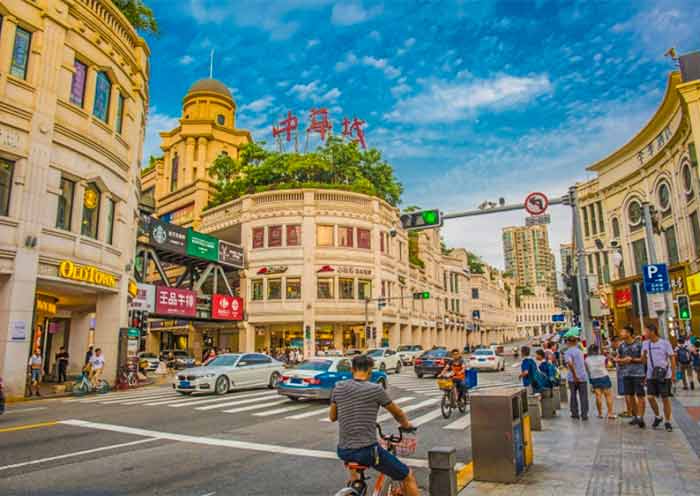
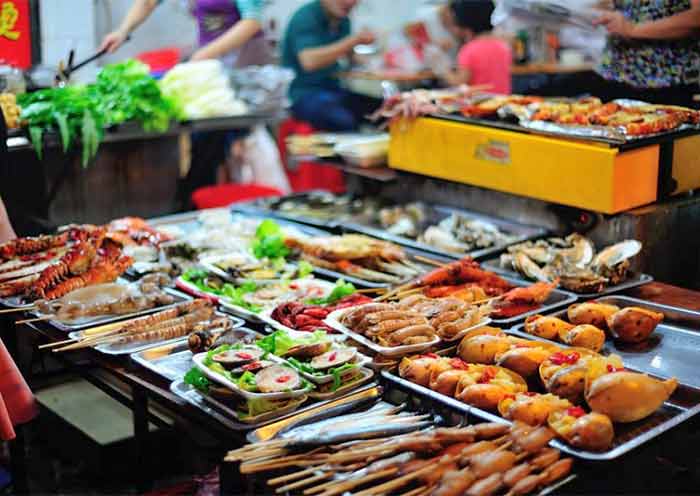
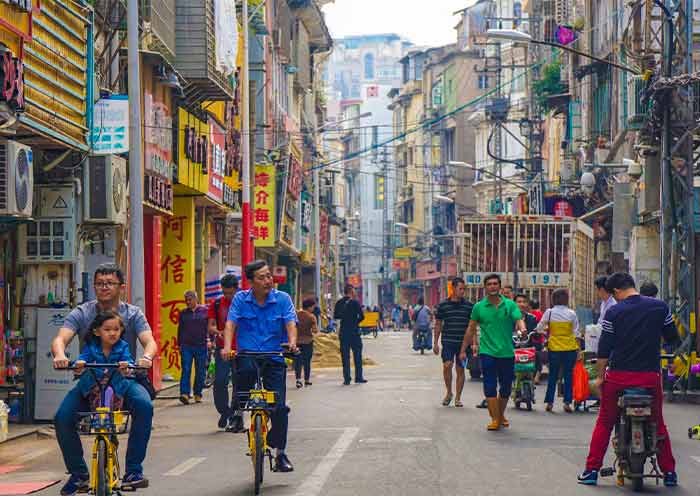
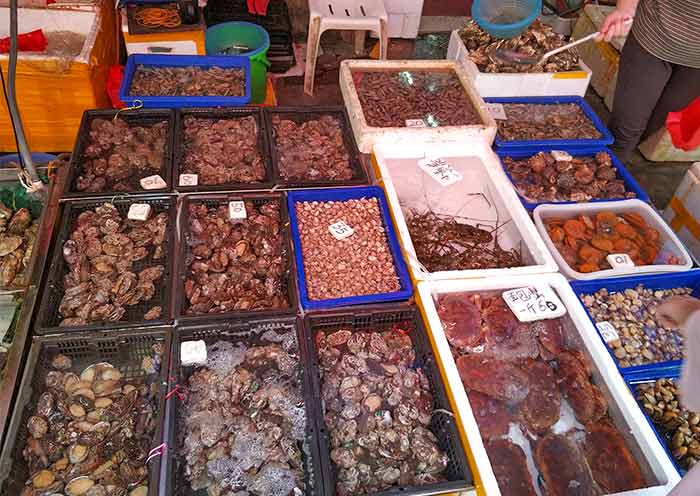
This morning, head to Nanjing Hakka Tulou (南靖土楼) from Xiamen City (150km, 2.5 hours drive). You will enjoy a full-day guided tour with us to witness the amazing Fujian Tulou (world Heritage), the masterpiece of traditional Chinese residential buildings built by the Hakka people. You will have fun exploring the Tianluokeng Tulou Cluster, which was mistakenly identified as a “missile weapon base” by America. Have a bite of Hakka food and learn more about Hakka culture by visiting Yuchang Building and Taxia Village.
When arrive at Tianluokeng Tulou Cluster(田螺坑土楼群), you will fall in love with the 5 “unique and mythical mountain architectures” surrounded by rice terrace fields, tea bushes, and fruit trees like persimmon. There are over 15,000 Nanjing Tulou buildings, and the Tianluokeng Tulou Cluster is a must-visit with its 5 iconic Hakka Tulou buildings, locally referred to as the "Four Dishes and One Soup" (四菜一汤). It consists of one square Tulou (Buyun Building步云楼; the most common shape among Tulou), one oval Tulou (Wenchang Building文昌楼; the only oval-shaped Tulou in China), and three round Tulou buildings (Hechang Building和昌楼, Zhenchang Building振昌楼, and Ruiyun Building瑞云楼). The round Tulou and square Tulou also represent the Eastern philosophy of "Heaven is round, Earth is square" (天圆地方), the balance of Yin and Yang, as well as the complementary nature of movement and stillness, which depicts the ancient Chinese scientific cognition of the universe. From the upper observation deck (上观景台), you can overlook the Tulou cluster resembling blossoming plum flowers scattered in front of the rice terrace fields, symbolizing the auspicious meaning of "Five Blessings through Plum Blossom Opening" (梅开五福). According to Chinese Fengshui (风水), the arrangement of the five Tulou buildings follows the Five Elements (五行Metal, Wood, Water, Fire, Earth) layout. According to this layout, the four round Tulou buildings—Wenchang Building, Hechang Building, Zhenchang Building, and Ruiyun Building—correspond to the elements of Metal (金), Wood (木), Water (水), and Fire (火), respectively. The central square Tulou, the Buyun Building, corresponds to the Earth (土) element. According to ancient Chinese philosophy, the elements of Fire, Wood, Earth, Metal, and Water represent the blessings of Fortune, Prosperity, Longevity, Happiness, and Wealth (福、禄、寿、喜、财), respectively. The five Tulou buildings mean the fulfillment of these five blessings (五福), representing the Hakka people’s wish for happiness and good fortune. From the lower observation deck (下观景台), you can admire the Tulou Cluster resembling a Fujian version of the "Potala Palace" that stands at the top of the rice terrace fields.
The Tianluokeng Tulou Cluster, initially built in 1662, is now the settlement of around 700 members of the Huang family (Hakka people). All five Tulou buildings face northeast and are oriented southwest. You can explore the first Tulou built in Tianluokeng the "Buyun Building" (步云楼), symbolizing the hope that future generations will excel in education and succeed in their careers. Then visit the subsequent buildings including the "Hechang Building" (和昌楼) representing harmony and prosperity, the "Zhenchang Building" (振昌楼) representing progress and prosperity, the "Wenchang Building" (文昌楼) symbolizing cultural prosperity, and the "Ruiyun Building" (瑞云楼) with auspicious and wealthy connotations. When enter Tulou buildings, you will see each vertical household within the Tulou accommodates one family, with the ground floor serving as the kitchen, the second floor as a granary, and the third floor as bedrooms. There are also shared halls, wells, and courtyards in the central area. The windows on the third floor provide ventilation and natural light, but can also serve as shooting holes in emergencies. Tulou buildings originated during the Song and Yuan dynasties (over 1,700 years ago) and flourished during the late Ming, Qing, and Republic of China periods. The ancestors of the Hakka people came from the Central Plains (中原Henan province) and migrated south to escape wars. They settled in this rugged, wildlife-infested, and bandit-prone area, living in close-knit communities (Hakka Tulou) for self-preservation. Since they were guests from distant lands, they became known as "Hakka people" (客家人).
At lunchtime, you can have a Tulou Hakka family visit to enjoy delicious Hakka food and experience the local Hakka people's lifestyle. Don’t forget to try Hakka rice wine.
After lunch, head to Xiaban Village (下板村), a flat land carved out of the surrounding mountains, where the streams flow joyfully and tea gardens cascade in layers. Twelve Tulou buildings are scattered in an orderly manner on both sides of the streams. You will visit the most renowned Tulou here, the Yuchang Building (裕昌楼). Known as the "Father of Fujian Tulou" (福建土楼之父) and the oldest existing Tulou, the Yuchang Building is hailed as the Tulou version of "Leaning Tower of Pisa" (比萨斜塔), with a maximum tilt of 15°. Completed in 1308, the Yuchang Building was finished several decades earlier than the Leaning Tower of Pisa in Italy (completed in 1372). From the outside, the Yuchang Building's exterior walls are weathered and mottled, resembling an elderly figure who has weathered storms. You will discover that the Tulou is enclosed by outer walls measuring 1-2 meters thick and load-bearing inner walls around 50 centimeters thick. Made primarily of raw earth, it is mixed with lime, fine sand, glutinous rice, brown sugar, bamboo chips, and wooden strips. Through repeated pounding and compacting, the Tulou is constructed, featuring characteristics such as communal living, theft prevention, earthquake resistance, animal deterrents, fire resistance, moisture resistance, ventilation, and natural lighting, ensuring warmth in winter and coolness in summer. Stepping into the Yuchang Building, you will be startled at why it is called the "East Leaning West Tilted Building" (东歪西斜楼). Although the pillars of the third and fourth-floor corridors lean clockwise, while the pillars of the fifth-floor corridor lean counterclockwise, giving it an appearance of being on the verge of collapse, it has endured countless storms over seven hundred years, as well as multiple earthquakes, and remains intact. According to legend, during the construction of the building, the artisans were angered by the lack of care given to them, so they intentionally constructed it this way.
The Yuchang Building (Zigzag Building) is a round Tulou which is not only a product of early joint-stock ownership but also a vivid demonstration of the special sentiment and application of Feng Shui (风水) and the number "five" in ancient Chinese architecture. Yuchang Building was jointly funded and constructed by five clans: Liu, Luo, Zhang, Tang, and Fan. The five clans divided the building into five sections based on their required rooms, with five sets of staircases and five observation decks on the outer walls. This design embodies the philosophical concept of the mutual generation of the five elements in Tulou architecture, promoting harmonious living, and also represents the aspiration for abundant harvests and good fortune. Perhaps because ancient Chinese people often used "five" for counting (with five fingers on each hand and foot) and considered it the largest and auspicious number. Yuchang Building has five floors: the first floor is the kitchen, the second floor is the granary, the third floor is for the elderly, the fourth floor is for the young, and the fifth floor is used for storing coffins. Interestingly, Yuchang Building has the most wells among Fujian Tulou buildings (22 wells). Each kitchen has its own well, allowing easy access to water by simply using a dipper. In the central courtyard of the building, there is a single-story circular ancestral hall, and in front of the hall, there is a Yin-Yang Bagua pattern paved with cobblestones, divided into five sections representing the five elements: metal, wood, water, fire, and earth. The building consists of a total of 269 rooms. At its peak, it housed over 40 households with more than 360 people. Currently, there are 24 households with the surname Liu, totaling 123 residents. You will be invited by the Hakka people to their rooms, have a look at their well, and have a drink of Oolong tea made by the locals while learning more stories and folk culture in Tulou from the owner of the Hakka Castle.
In the afternoon, move to Taxia Village (塔下村), a Hakka village famous as Minnan Zhouzhuang Water Town in southern Fujian (闽南周庄). With its small bridge, flowing water, and peaceful houses, Tiaxia Village is a village with a history of over 400 years that resembles a secluded paradise. It is not only a renowned overseas Chinese village in Fujian Province but also a famous longevity village. A mountain stream, approximately 1 km long, meanders through the gorge. There are 11 stone arch bridges of various styles on the stream, and along the banks, there are 42 earthen buildings. If you climb to the observation deck on the small hilltop, you will be rewarded with a panoramic view of the "Taiji water village" (Water Town of Taichi). Due to the river forming an S shape, on both sides of the river, centered around two circular Tulou buildings—Yude Building and Shunchang Building—numerous Tulou and charming small brick houses are scattered, making the entire village resemble a Taiji diagram. You can visit the Yude Building by the stream. From the outside, it appears as a complete Tulou, but inside, only half of it is built. The front half-circle has one more floor than the back, resembling a kitchen apron, hence its nickname, "Apron Building" (围裙楼). This Tulou suffered a devastating fire, with evident bullet holes and burn marks on the broken walls. It was later restored by the overseas Chinese. Don't miss Deyuan Tang Hall (德远堂Zhang Clan Ancestral Hall张氏宗祠). According to records, in 1426, the Zhang ancestors settled here, forming a typical Hakka village. In front of the ancestral hall, there is a semicircular pond, and along the pond, 24 stone dragon flagpoles stand tall, reaching up to 10 meters. Only villagers who achieved great accomplishments or centenarians are qualified to have a dragon pillar erected, representing the pride of the clan. Overnight in Taxia Village.
Notes:
1. Visit Tianluokeng Tulou Cluster, you can either hike or take a shuttle bus.
2. If you visit Taxia Village in autumn, you will see Hakka people drying persimmon outside Tulou, and the whole village smells sweet.
3. If you are interested in Oolong tea, you can contact us ahead of time for tea leave picking at a local tea plantation around Taxia Village.
4. Both Tianluokeng Tulou Cluster and Chuxi Tulou Cluster are good places to view rice terrace fields and take nice photos.
4. In the Autumn season, you can choose to catch the rare chance to pick up local fruits and even try primitive farm work.
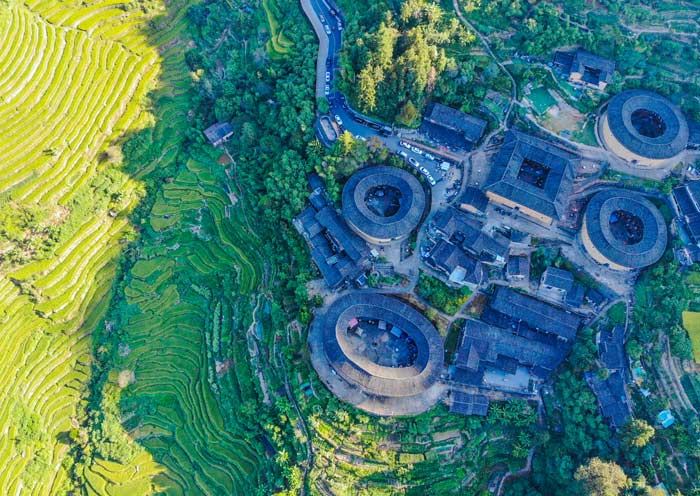
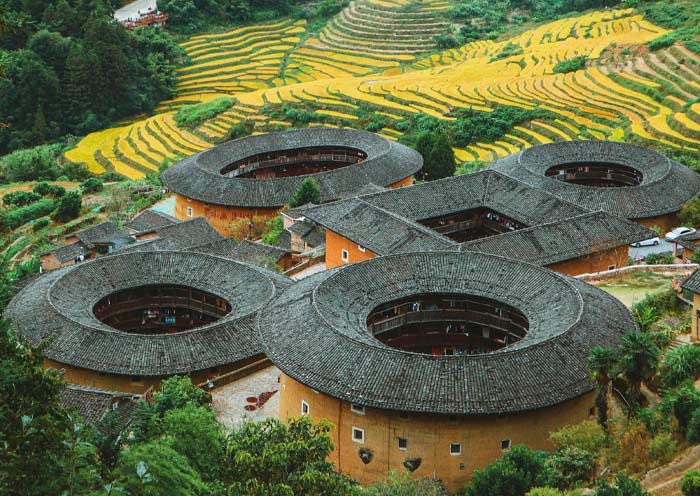
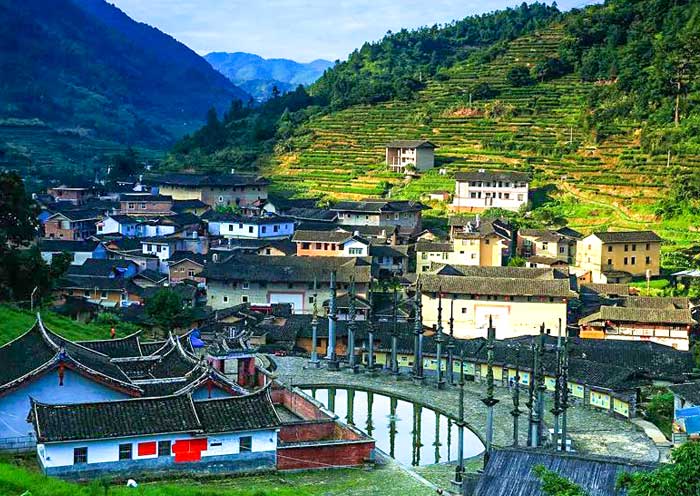
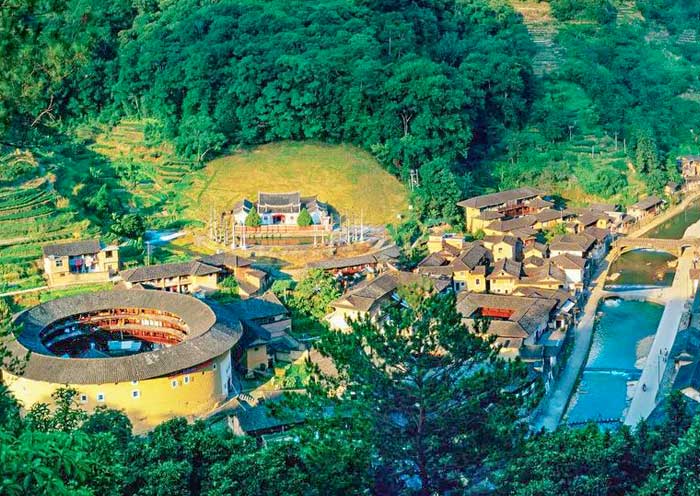
This morning you will head to Yongding Hakka Tulou (永定土楼) from Nanjing Hakka Tulou which is about 10km with 20 minutes’ drive. There are over 23,000 Tulou buildings in Yongding. Yongding Tulou, with its long history, diverse architectural styles, and abundant varieties, surpasses Nanjing Tulou in terms of scale and quantity. You will have a full day to explore the must-visit attractions of Yongding Tulou such as Gaobei Tulou Cluster, Chengqi Building (King of Tulou), Chuxi Tulou Cluster, and Jiqing Building. Take your time to explore the filming location of "Big Fish & Begonia" and learn more folk culture of the local Hakka people.
In the morning, visit the Chengqi Building (承启楼), known as the "King of Tulou" (土楼王), which is the most popular and lively one because it is the largest round Tulou with a diameter of 73 meters. It has a history of over 600 years and was mainly built and inhabited by the Jiang clan (江氏). With 400 rooms, it is still home to residents today. At its peak, it housed 80 households with a total population of over 600 Hakka people, making it a vibrant place to experience the hustle and bustle of life. Chengqi Building stands four stories high and comprises four concentric circular structures. The outer ring serves as bedrooms, the third ring as kitchens, the second ring as a school, and the innermost ring as the ancestral hall. Its unique architectural design of concentric circles and nested rings represents the epitome of circular Tulou buildings with internal corridors. Chengqi Building gained fame not only for its appearance in the movie "Big Fish & Begonia" (Chun's home) but also for being featured on Chinese postage stamps.
After that, drive to Chuxi Tulou Cluster (初溪土楼群), which is a commercially undeveloped, incredibly pristine, and naturally rustic Tulou building. Chuxi Tulou is renowned as the "most beautiful Tulou cluster in China". You can enjoy the blooming of rapeseed flowers in March and April and experience the autumn harvest in the rice fields in September and October. It takes its name from the river of the same name, and along the way, you can enjoy the enchanting scenery on both sides of the Chuxi River (初溪河). Built over several hundred years from the Ming Dynasty to the present, Chuxi Tulou served as the gathering place for the Xu clan (徐氏) and is the most primitive and culturally rich Hakka Tulou in Yongding District. As one of the least commercialized Tulou clusters with fewer tourists, Chuxi Tulou is the best place to appreciate these unique structures. Ascending the viewing platform, you can take in the magnificent sight of the entire Chuxi Tulou cluster, including 5 round Tulou buildings and 31 square Tulou buildings (square, rectangle, and hexagon ones). In the distance, terraced fields climb and extend into the mountains. Interestingly, all the Tulou buildings in Chuxi have the character "Qing庆" in their names, symbolizing prosperity and good luck. Afterward, you can venture into Chuxi Village (初溪)and seek out the oldest and youngest Tulou buildings among the World Heritage Sites: Jiqing Building (集庆楼), a 600-year-old circular Tulou with a diameter of 66 meters, and Shanqing Building (善庆楼), a 30-year-old Tulou with a diameter of 31 meters.
With a diameter of 66 meters, the Jiqing Building (集庆楼) is the largest Tulou in Chuxi. As the only Tulou that is unoccupied, you can freely explore this double-ring Tulou, with the inner ring being one story high and the outer ring four stories high, with the ancestral hall located in the middle of the inner ring. Built in 1419, it is the oldest existing round Tulou in Yongding, with the most unique structure and the most staircases. While most circular Tulou buildings have only four public staircases, the Jiqing Building features one staircase per household, with 72 staircases dividing the entire building into 72 independent units. It is said that during its peak, the building housed six to seven hundred residents. Due to its proximity to the river, the Jiqing Building does not have water wells but is equipped with nine lookout towers. Today, the Jiqing Building serves as a Hakka folk customs museum with the first floor providing insights into Tulou architecture and Hakka folk customs, the second floor exploring the origins of Hakka surnames, the third floor exhibiting calligraphy, painting, and photography related to Tulou, and the fourth floor showcases Yongding Hakka culture.
Shanqing Building (善庆楼) is located behind the Jiqing Building and stands out from other Tulou buildings with its white exterior walls painted with lime, creating a strong color contrast compared to the usual earthy tones of other Tulou buildings. Shanqing Building is the youngest Tulou in Chuxi Village and incorporates many modern elements in its design. The entrance hall, corridors, and courtyard are paved with square granite of the same specifications.
After the tour, it is time to escort you back to your hotel in Xiamen.
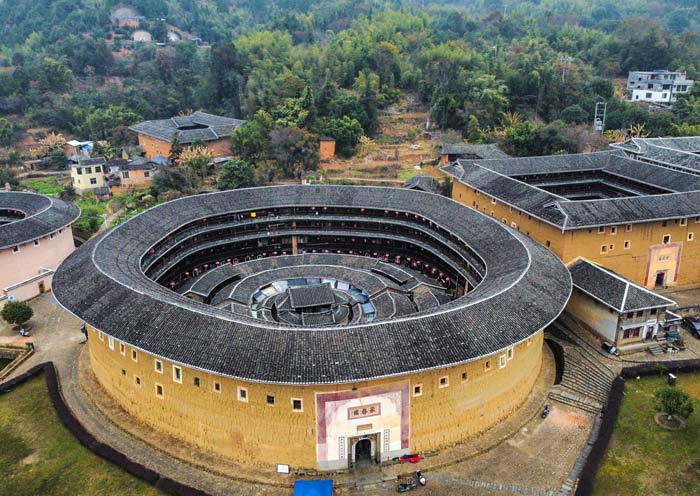
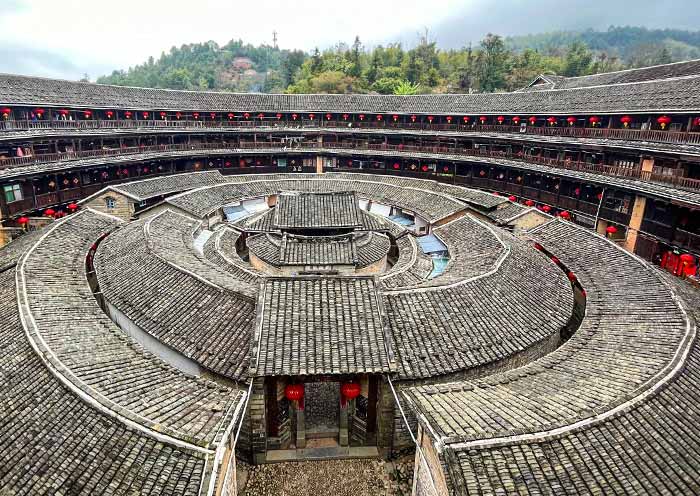
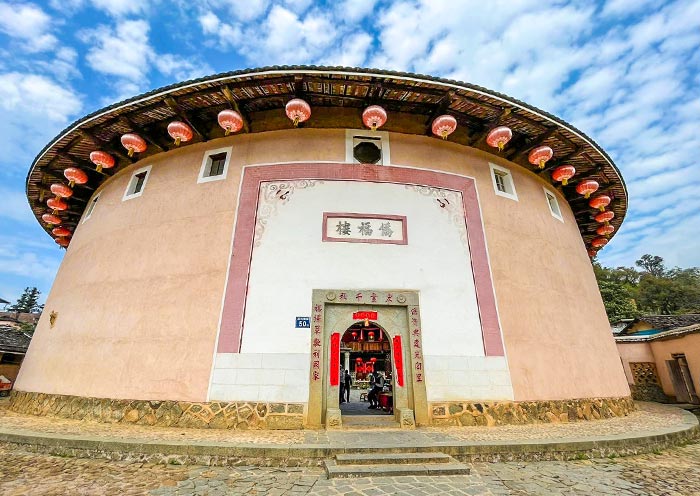
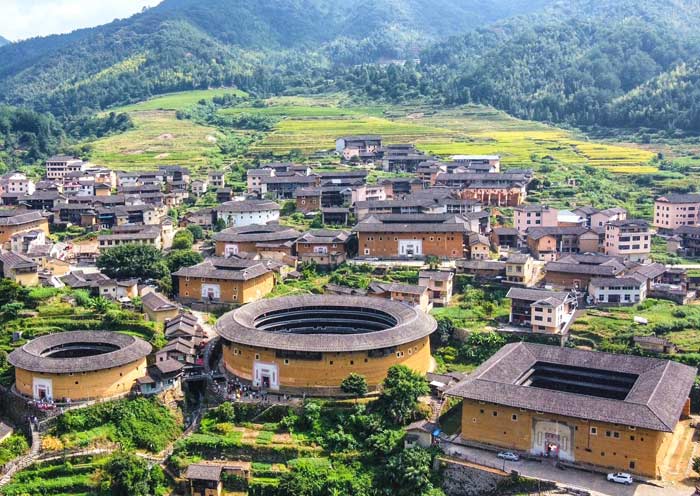
Start your day with a peaceful visit to South Putuo Temple (南普陀寺), arriving early to enjoy the serenity before the crowds. South Putuo Temple, also known as Nanputuo Temple, is one of the most famous temples in Fujian and is considered a pilgrimage site by dedicated followers from Southeast Asia.
With a history dating back a thousand years, the temple was originally built in the late Tang Dynasty and was called Sizhou Temple (泗洲寺). During the reign of Emperor Kangxi of the Qing Dynasty, Shi Lang recovered Taiwan and was stationed in Xiamen. He built the Great Mercy Hall here to worship Guanyin, then changed the name of the temple to Nanputuo, which matches the Guanyin Dojo on Putuo Mountain in Zhejiang province. Over repeatedly rebuilt and renovated, today, it’s still an active and bustling temple with chanting monks and worshippers lighting incense.
Upon entering through the mountain gate, you are greeted by a wide expanse of lotus ponds and release pools, where many locals come to relax. The main buildings of the temple, including the Tianwang Hall (天王殿), Daxiong Baodian (大雄宝殿), Dabei Hall (大悲殿), and the Depository of Buddhist Sutras (藏经阁), are arranged along the central axis, each progressively elevated following the terrain. The buildings feature double eaves and flying ridges, topped with apricot-yellow glazed tiles, which stand out against the lush, towering ancient trees, creating a grand and imposing atmosphere. Don't miss a visit to Dabei Hall, the main hall of the temple, which houses a magnificent statue of Guanyin with a thousand arms and eyes, symbolizing her omnipresent mercy. In the Depository of Buddhist Sutras, you can see various precious Buddhist relics. Nanputuo Temple is also renowned for its vegetarian meals, so if you enjoy vegetarian food, consider dining here or choose some sweet Nanputuo vegetarian cakes as souvenirs.
After visiting South Putuo Temple, you will be driven to the port where you will board a 20-minute ferry to Gulangyu Island. Gulangyu, (Kulangsu in the local dialect), is a beautiful island off the coast of Xiamen. In 2017, Gulangyu was inscribed as a UNESCO World Heritage Site under the nomination "Historic International Settlement". Spanning an area of less than 2 square kilometers, the island boasts over 900 historical buildings of various architectural styles, earning it the nickname "International Architecture Exhibition". Gulangyu is also referred to as the "island of music". It is famous for its outstanding musicians and musical instruments. It has more than 200 pianos - the highest per capita ownership of pianos in the entire country. Furthermore, Gulangyu is lauded as a “Garden on the Sea”, The ban on motorized vehicles contributes to the serene atmosphere of the island, making it a popular destination for those looking to unwind. It boasts beautiful scenery including sandy beaches, lush gardens, and stunning views of the surrounding waters and city skyline.
When visiting Gulangyu Island, you have two choices. (1) Leisure Way: explore the island in a leisurely way, without being bound by fixed routes. Customize your experience based on your preferences and pace. (2) Cultural and Historical Architecture Route: visit the architecture representing various styles and listen to the historical stories behind old buildings
Optional Route Type: Leisure Way on Gulangyu
Duration: 3-4 hours
If you want to explore the island in a leisurely way, there is no need to follow a fixed itinerary. You can your tour guide your preferences, and they will recommend suitable ways and routes for you to explore.
If you don't like crowds, we can take you to quieter alleys. For example, you could take a leisurely stroll along Bishan Road, which is lined with shaded trees and flanked by buildings with a hundred years of history. You will listen to the guide share fascinating stories and historical anecdotes about the buildings. Or casually enter an old villa and have a cup of coffee, enjoying the peaceful time. If you are interested in museums, we can recommend a few intriguing ones, such as the Piano Museum, Organ Museum, Gulangyu International Calligraphic Carving Museum, and the Imperial Palace Gulangyu Foreign Cultural Relics Museum, etc. Alternatively, you could attend a piano performance at a concert hall. If you enjoy scenic spots, we recommend visiting Shuzhuang Garden, Haoyue Park, Sunlight Rock, etc. If you are a food lover, we can recommend some seafood restaurants or guide you to Longtou Road to try authentic Minnan snacks. If you love natural scenery, we can take you to some lesser-known vantage points where you can overlook the panoramic view. Or, you could experience the island like a local, heading to a seaside bathing area to stroll along the beach, feel the sea breeze, and soak up the sun like Meihua Beach, Dadeji Beach, etc.
Notes:
Visit Gulangyu, you can either walk or take a shuttle bus (RMB 50 per person)
Exploring the outdoor beauty and wandering around Gulangyu is free; however, please note that certain buildings and attractions may have an entrance fee.
Optional Route Type: Cultural and Historical Architecture Route
If you want to explore Gulangyu's architecture and history in depth, you can choose this route. Stepping into Gulangyu is like walking into an open-air architectural museum exhibition. The architectural tapestry of Gulangyu includes traditional Southern Fujian homes, European-style consulates, churches, mansions, or villas that harmoniously blend Chinese and Western architectural elements as well as influenced by Southeast Asian style. This rich blend is a result of its history as an international settlement and port city. From the intricate carvings and red bricks of local residences to the grand facades of colonial European buildings, each structure tells a part of Gulangyu's diverse cultural narrative. As you meander through the narrow alleys, you can admire the fusion of the East and West, the old and the new, making it a unique visual feast.
Scenic Spots You will Pass:
Sanqiutian Ferry Terminal → Boat House → Bagua Building (Organ Museum) → Yang Family Mansion → Fànpó Mansion → Trinity Church → Jingua Building ( Huang Cimin Villa ) → Dafu Courtyard Mansion→ Four-courtyard Complex → Chu Family Villa → Huang Family Villa Complex → Shuzhuang Garden (Piano Museum) → Hi Heaven → Huang Rongyuan Mansion ( China Records Museum) → Cathedral Church → Get back to Sanqiutian Ferry Terminal
Starting from Sanqiutian Ferry Terminal(三丘田码头), you embark on a historical journey through exquisite architecture. Your first stop is the Boat House (船屋) designed by American architect John Lay. This European-style villa stands out with its creative shape, resembling a cruise ship ready to set sail. Moving on, you'll discover the Bagua Building (八卦楼), named for the eight ridges on its red domed roof and its sixteen-sided top window, set on an octagonal platform. This villa combines architectural styles from Palestine, ancient Greece, Italy, and classical China. It stands out as the tallest villa on Gulangyu Island, and its eight-ridged red dome can be easily spotted from the Xiamen ferry, making it a recognizable landmark of Gulangyu. Today, it has been transformed into China’s only organ museum. Next, you'll discover the Yang Family Mansion (杨家园), renowned as the "Versailles of Gulangyu." This complex consists of four distinctive Western-style buildings, each of which is extremely magnificent and was built by overseas Chinese from the Philippines known as the "Philippine Hardware King." They are interconnected by quaint alleys, each boasting its garden, and equipped with the most advanced water supply facilities in Gulangyu at that time. This mansion still preserves numerous rare examples of the fusion of Chinese and Western art design, including Corinthian columns, relief steel decorations, structures made of red bricks, and round and pointed arched door lintels, showcasing unique artistic charm and historical value. Your journey continues to Fan Po Mansion (番婆楼), a symbol of filial piety in the overseas Chinese community. Built out of filial piety by an overseas Chinese from the Philippines. Fan Po herself, adorned in clothes and jewelry sent by her sons, embodies the image of a wealthy woman from Nanyang. Neighbors referred to her as "Fan Po," hence the name "Fan Po Mansion." The architectural style of the mansion is an intriguing mix of Chinese elements and Rococo style, challenging the senses and showcasing an extraordinary kind of beauty. Next on the list is the Trinity Church (三一堂), a church where Chinese and Western architectural styles come together harmoniously. It was built through a collaborative effort by three local churches to provide a place for Chinese worship for the residents of the island.
Then, turn right, which takes you to the Jingua Building(金瓜楼), named after the two golden gourds on its roof, which shimmer in sunlight, the unique shape are characteristic of the Byzantine style, and the golden gourds symbolize prosperity and good fortune in the Chinese culture. The gateway of the building features a traditional Chinese hip-and-gable roof, distinguished by its double eaves and upturned corners, showcasing another exquisite example of the fusion between Chinese and Western architectural styles. Continuing your tour, you’ll visit the largest and best-preserved Southern Fujian red-brick building complex on Gulangyu Island: Four-courtyard Complex (四落大厝). This complex epitomizes the typical layout of traditional Southern Fujian architecture, featuring a front courtyard leading to the main living quarters, all aligned along a central axis. The architectural details include white stone footings paired with red brick and tiles, creating a visually striking and harmonious effect. Adjacent to this is the Dafu Courtyard Mansion (大夫第), one of the earliest and most prominent red-brick residences within the Four-courtyard Complex. The mansion once belonged to Huang Xuzhai, a distinguished fourth-grade official in the imperial court, as evidenced by the "Dafu Di" plaque adorning the residence. You'll then proceed to Chu Family Villa (褚家园), a building that represents a fusion of Minnan (Southern Fujian) and Nanyang (Southeast Asian) architectural styles. Following that, Huang Family Villa Complex (黄家花园) awaits, once celebrated as "the number one villa." This complex comprises three magnificent villas, standing as the most opulent and grandiose among all the residences on Gulangyu Island, built by overseas Chinese from Indonesia, known as the "Indonesian Sugar King." It is a high-class villa showcasing a splendid fusion of European villa elegance, aristocratic opulence, and traditional Chinese characteristics. Over the years, this villa has hosted numerous Chinese and international celebrities and political figures.
The climax of your tour is Shuzhuang Garden (菽庄花园), a garden that has perfectly translated the phrase "facing the sea, with spring flowers blossoming" into reality. The garden backs onto Sunlight Rock and faces the sea, skillfully employing the techniques of "hiding the sea (藏海)" and "compensating the mountain(补山)," becoming a classic example of Chinese garden architecture by the sea. Upon entering the garden, the sound of the waves is near, yet the sea remains out of sight until you cross a screen wall, revealing a sudden expansive view - this is the first "hiding." The true "hiding" lies in the Forty-Four Bridge, beneath which a gate channels seawater into the private garden, creating inner and outer ponds and calming the tumultuous waves. The seaside slopes and rocks are also fully utilized, with terraces built up and pavilions constructed, transforming a narrow bay into a broad, open vista. Turning left past the Forty-Four Bridge and up the hill is the Gulangyu Piano Museum, showcasing nearly a hundred precious antique pianos donated by collector Hu Youyi. Just in time for a piano performance,the resonant piano sounds, harmonizing with the waves outside, encapsulate the unique charm of Piano Island. Then passing through Tianwei Road and taking a right turn onto Zhonghua Road to continue walking, you will arrive at Hi Heaven (海天堂构), the only villa complex on Gulangyu Island that is arranged symmetrically along a central axis. The design masterfully incorporates both Chinese and Western cultural elements, with Chinese-style roofs atop Western-style buildings. Adjacent to the tower is Huang Rongyuan Mansion (黄荣远堂), whose architecture and gardens are extremely aesthetic and characteristic, epitomizing the fusion of Western, Southeast Asian, ancient Chinese, and modern styles. It is renowned as the “most romantic villa” on Gulangyu Island and has served as the filming location for many film and television productions. Nowadays, it has been transformed into the China Record Museum, which houses a collection of precious vinyl records. Wandering back towards the ferry terminal, you’ll pass several consulates and churches, such as the Catholic Church (天主教堂) - , the Union Church (协和教堂) , the Japanese Consulate (日本领事馆), and the British Consulate (英国领事馆), etc. Each of these buildings has a unique architectural style and its own story to tell.
After the tour, it is time to escort you back to your hotel in Xiamen or transfer you to the train station/airport to bid you farewell. Thank you for choosing Asia Odyssey Travel (AOT) for your 4 Day Xiamen Gulangyu Fujian Tulou In-depth Tour. We are always dedicated to serving you and look forward to welcoming you again for your future trips to China/Asia.
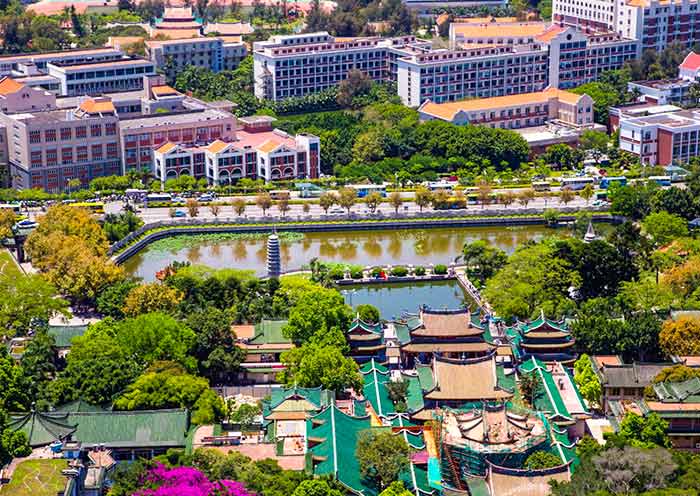
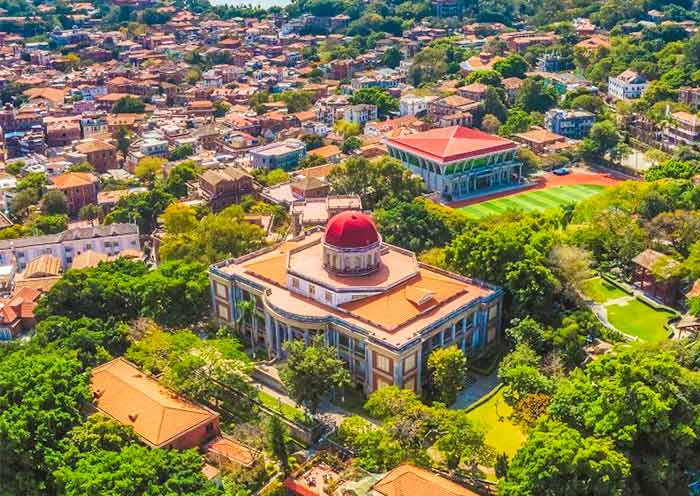
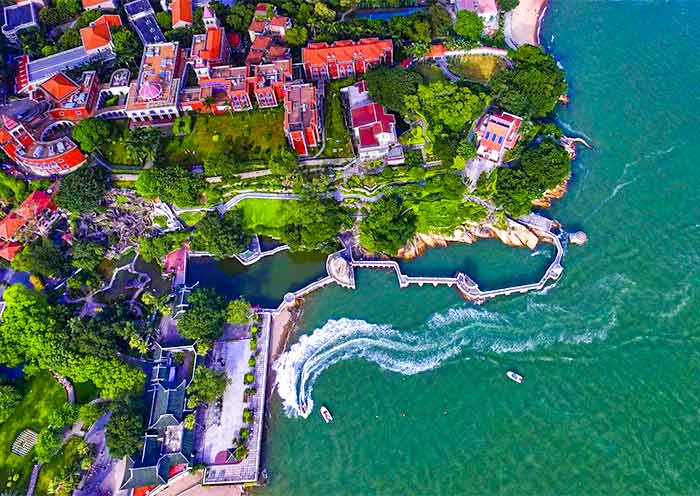
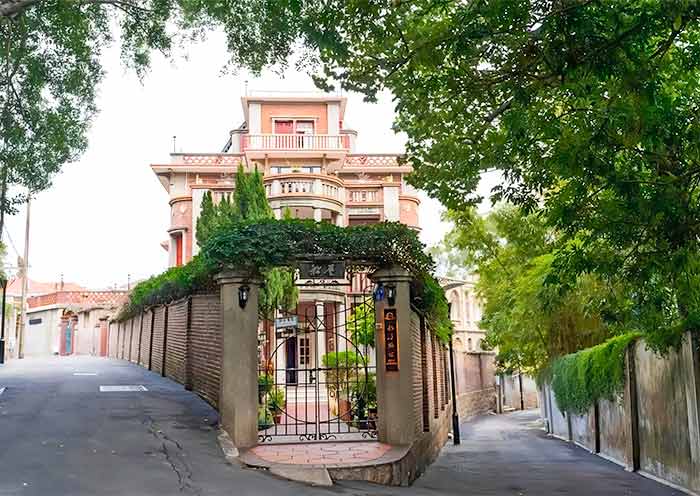
Price: What’s Included & What’s Excluded
What’s Included?
What’s Excluded?
Important Trip Notes for Booking a Private China Tour
Accommodation & Hotel Condition for Your China Tour
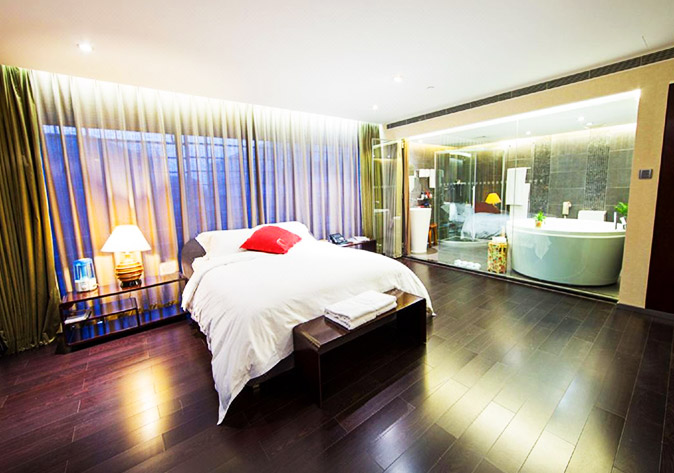

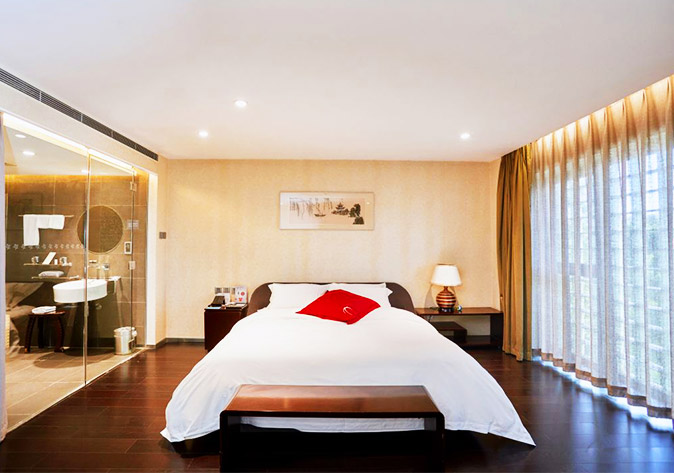
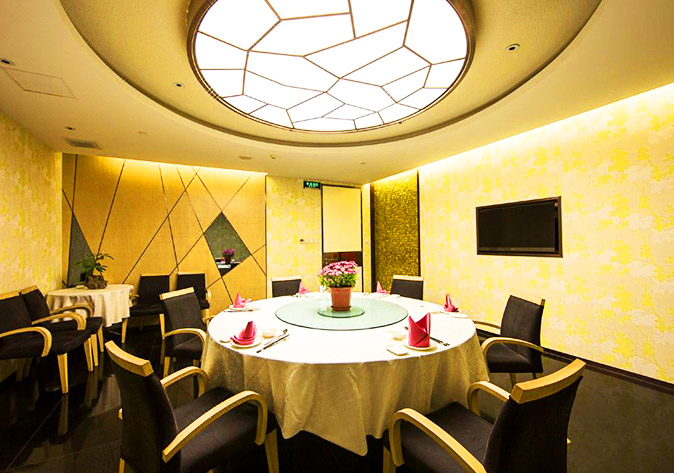
Photo Gallery for This Itinerary
Latest Fujian Tours Reviews from Our Customers

Aisha
Malaysia
Destination(s): Ningxia
Date of Experience: Sep 02, 2025
Tour Customized by: Nicole
You May be Interested in This Tour: 5 Days Classic Ningxia Tour - Shapotou Desert, Yellow River & Lost Kingdoms

Emily Johnson
USA
Expert guides and seamless logistics made our trip truly exceptional. Highly recommended! The Tengger Desert's colorful lakes were a surreal highlight after an unforgettable night camping under Shapotou's starry sky. The history, wine, and off-roading created a perfect, diverse adventure.
Destination(s): Ningxia
Date of Experience: Oct 09, 2025
Tour Customized by: Anthony
You May be Interested in This Tour: 6 Days Ningxia Odyssey Tour: Desert Camping & Off-road to Colorful Lakes

Ryan Tan
Singapore
The perfect mix of history, wine tasting, and desert adventures, especially camping in Shapotou under the stars. Highlights included the stunning Western Xia Tombs and Xige Winery. Truly unique and well-organized—highly recommended!
Destination(s): Ningxia
Date of Experience: Jun 12, 2025
Tour Customized by: Danny
You May be Interested in This Tour: 6 Days Ningxia Wine Tour with Desert Camping in Shapotou
Price: Request
(Based on a private tour for two people. Price varies depending on program, travel date, number of people.)
Free Enquiry! You don’t need to pay for the reservation.
- United States (+1)
- Australia (+61)
- Singapore (+65)
- Malaysia (+60)
- Philippines (+63)
- Canada (+1)
- Italy (+39)
- Indonesia (+62)
- United Kingdom (+44)
- Spain (+34)
- Mexico (+52)
- Hong Kong (+852)
- Thailand (+66)
- United Arab Emirates (+971)
- New Zealand (+64)
- South Africa (+27)
- Germany (+49)
- Brazil (+55)
- India (+91)
- France (+33)
- Vietnam (+84)
- The Netherlands (+31)
- Saudi Arabia (+966)
- Ireland (+353)
- Argentina (+54)
- Switzerland (+41)
- Romania (+40)
- Pakistan (+92)
- Japan (+81)
- Portugal (+351)
- Bangladesh (+880)
- South Korea (+82)
- Puerto Rico (+1)
- Türkiye (+90)
- China (+86)
- Belgium (+32)
- Qatar (+974)
- Greece (+30)
- Taiwan (+886)
- Austria (+43)
- Poland (+48)
- Israel (+972)
- Chile (+56)
- Sri Lanka (+94)
- Nigeria (+234)
- Peru (+51)
- Colombia (+57)
- Hungary (+36)
- Nepal (+977)
- Denmark (+45)
- Bulgaria (+359)
- Norway (+47)
- Slovenia (+383)
- Sweden (+46)
- Kuwait (+965)
- Costa Rica (+506)
- Ecuador (+593)
- Venezuela (+58)
- Malta (+356)
- Croatia (+385)
- Tunisia (+216)
- Czechia (+420)
- Mongolia (+976)
- Bahrain (+973)
- Mauritius (+230)
- Papua New Guinea (+675)
- Cambodia (+855)
- Dominican Republic (+1)
- Luxembourg (+352)
- Finland (+358)
- Guatemala (+502)
- Myanmar (+95)
- Maldives (+960)
- Slovakia (+421)
- Laos (+856)
- Serbia (+381)
- Brunei (+673)
- Oman (+968)
- Macao (+853)
- Panama (+507)
- Morocco (+212)
- Jordan (+962)
- Georgia (+995)
- Fiji (+679)
- Bolivia (+591)
- Lithuania (+370)
- Bahamas (+1)
- Cyprus (+357)
- Latvia (+371)
- Bhutan (+975)
- Iraq (+964)
- Iran (+98)
- Kenya (+254)
- Jamaica (+1)
- Zimbabwe (+263)
- Azerbaijan (+994)
- Uruguay (+598)
- Estonia (+372)
- Andorra (+376)
- Cameroon (+237)
- Ghana (+233)
- Kazakhstan (+7)
- Nicaragua (+505)
- Egypt (+20)
- Russia (+7)
- Albania (+355)
- Réunion (+262)
- Montenegro (+382)
- Algeria (+213)
- Afghanistan (+93)
- Martinique (+596)
- Uganda (+256)
- Honduras (+504)
- North Macedonia (+389)
- Trinidad and Tobago (+1)
- Suriname (+597)
- Antigua and Barbuda (+1)
- Zambia (+260)
- Ukraine (+380)
- Armenia (+374)
- Barbados (+1)
- Belarus (+375)
- Palestine (+970)
- Lesotho (+266)
- Moldova (+373)
- Ethiopia (+251)
- French Polynesia (+689)
- Gambia (+220)
- Guam (+1)
- Gibraltar (+350)
- Isle of Man (+44)
- New Caledonia (+687)
- El Salvador (+503)
- Comoros (+269)
- Seychelles (+248)
- Chad (+235)
- Samoa (+685)
- Cook Islands (+682)
- Palau (+680)
- Paraguay (+595)
- DR Congo (+243)
- Solomon Islands (+677)

